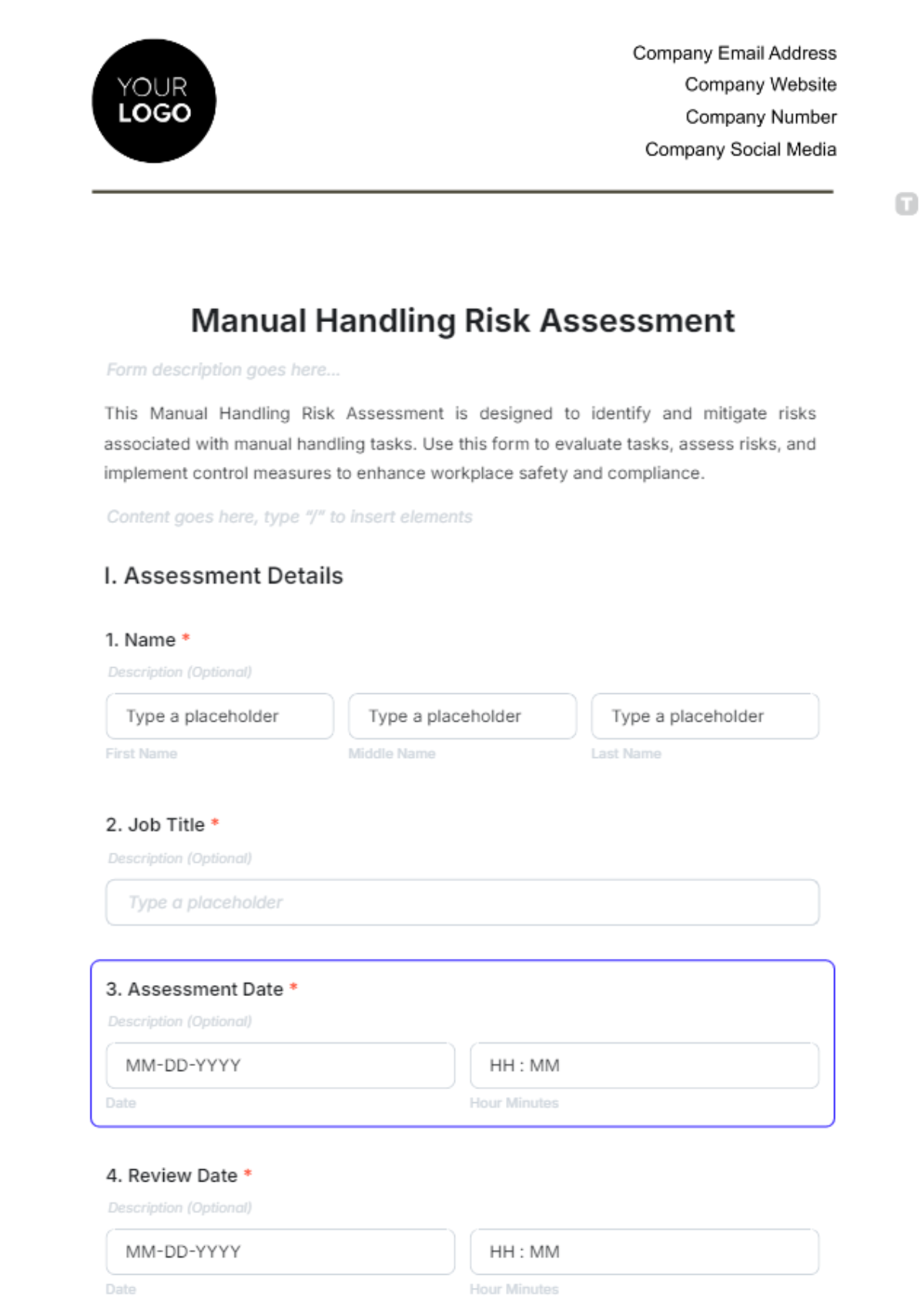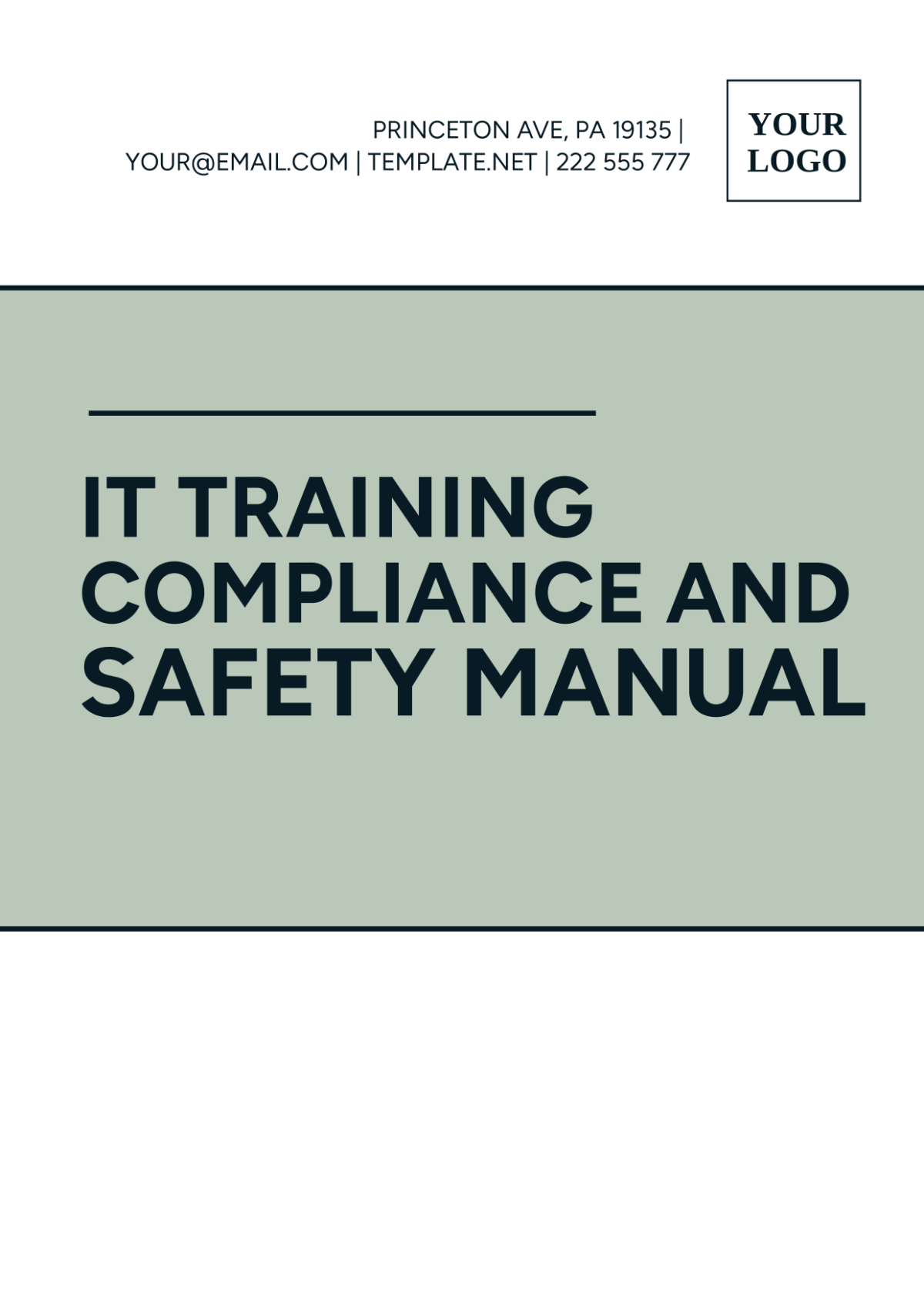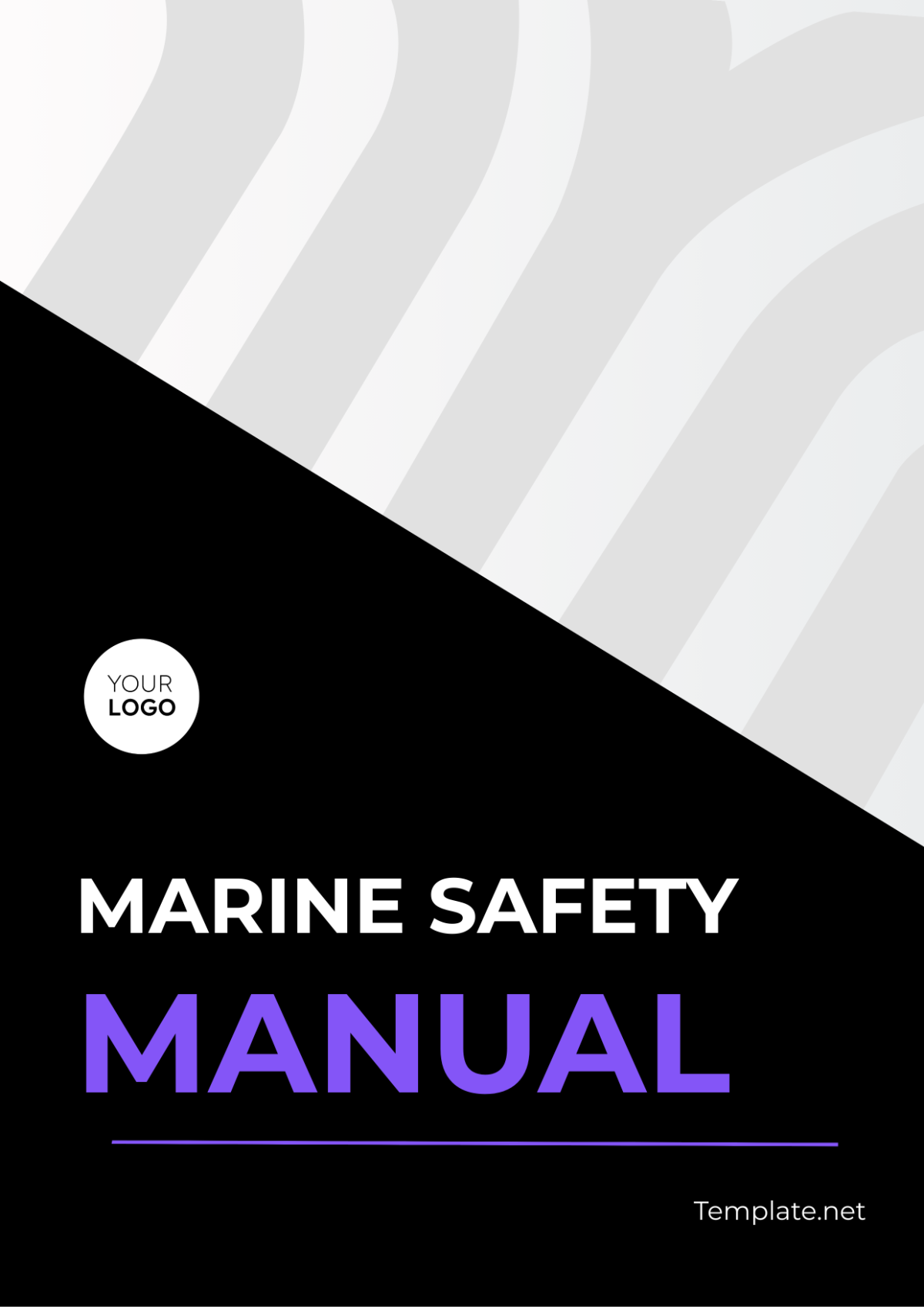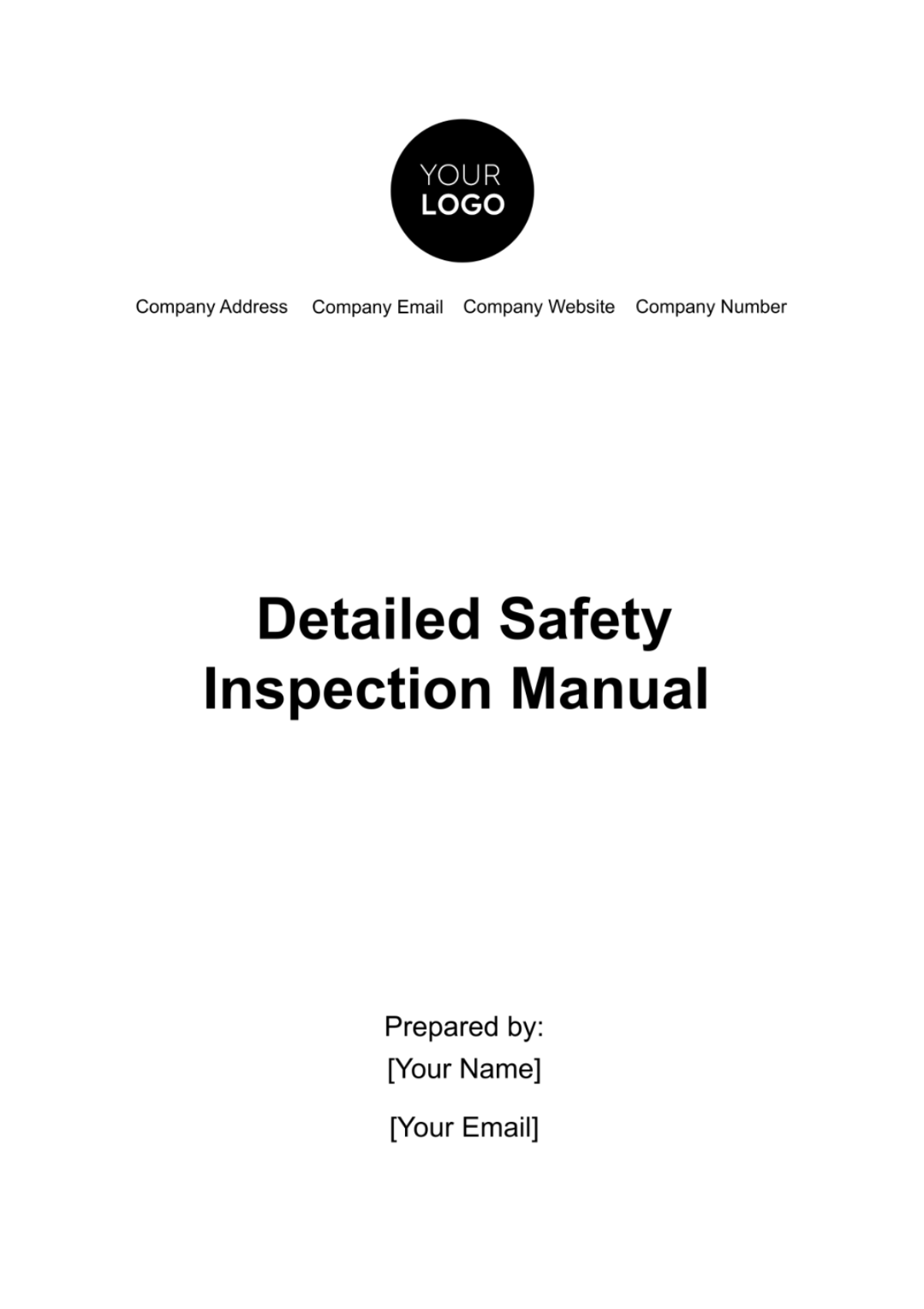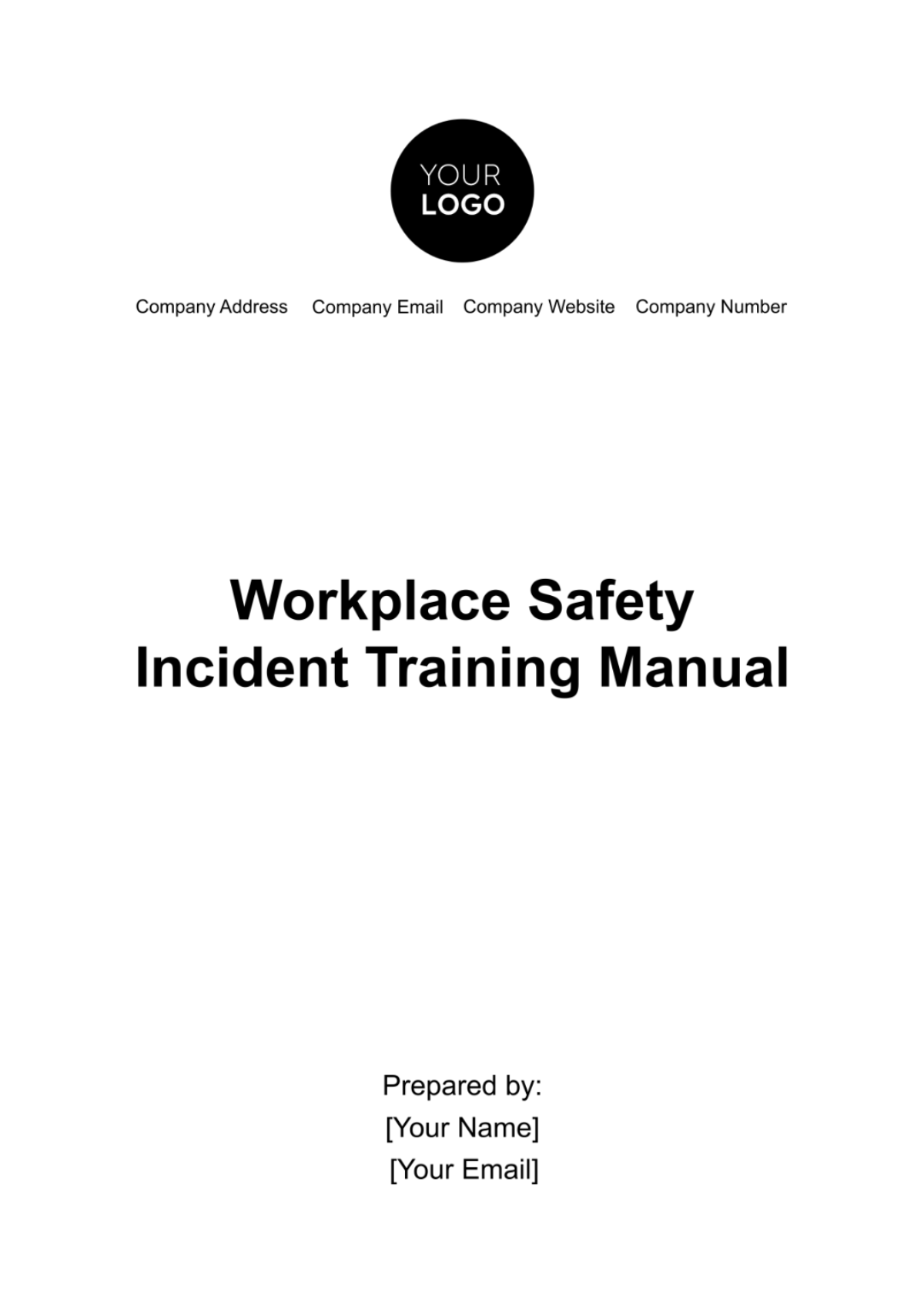Bakery Hygiene Manual Format
I. Introduction
A. Purpose
Ensure Safety: The purpose of this Bakery Hygiene Manual is to outline standard hygiene practices to ensure the safety and well-being of all customers and staff at [Your Company Name]. By adhering to these practices, we can minimize the risk of foodborne illnesses.
Compliance: This manual aims to ensure that the bakery complies with local and national health regulations. Compliance helps avoid legal issues and maintains the bakery's reputation.
Prevent Contamination: This manual is designed to prevent contamination and ensure that all baked goods are produced in a clean and safe environment. Proper hygiene practices help maintain the quality and safety of our products.
B. Scope
Hygiene Practices: This manual covers all hygiene practices related to personal hygiene, kitchen sanitation, food handling, and cleaning procedures. It serves as a comprehensive guide for maintaining high standards of cleanliness.
All Staff: The guidelines in this manual apply to all staff members, including bakers, kitchen assistants, and front-of-house staff. Every employee has a role in maintaining hygiene standards.
Regular Updates: This manual will be reviewed and updated regularly to incorporate new regulations and best practices. Keeping the manual current ensures ongoing compliance and safety.
C. Target Audience
Staff Members: All staff members at [Your Company Name], including bakers, kitchen assistants, and front-of-house staff, must adhere to the guidelines outlined in this manual. Each member plays a crucial role in maintaining hygiene.
Management: Management is responsible for ensuring that all staff are trained and compliant with the hygiene standards. They must also ensure that the necessary resources and tools are available.
New Employees: New hires will receive training on the hygiene practices outlined in this manual as part of their onboarding process. This ensures that everyone starts with the same knowledge base.
Inspectors and Auditors: Health inspectors and auditors will use this manual to assess our compliance with hygiene standards. Maintaining transparency and adherence to these practices is essential.
II. Personal Hygiene
The following table provides an overview of the ways for maintaining personal hygiene in the bakery. Proper personal hygiene is critical in preventing contamination and ensuring the safety of our products.
No. | Component | Description |
|---|---|---|
1 | Hand Washing | Wash hands thoroughly before handling food. |
2 | Hair Restraints | Use hairnets or hats to keep hair contained. |
3 | Clean Uniforms | Wear clean uniforms at all times. |
4 | Avoid Jewelry | Remove jewelry to prevent contamination. |
5 | Health Checks | Report any illnesses or symptoms to management immediately. |
A. Hand Washing
Thorough Washing: Wash hands thoroughly with soap and water for at least 20 seconds before handling food. This practice helps eliminate bacteria and other contaminants.
Regular Intervals: Hands should be washed at regular intervals, especially after using the restroom, handling raw ingredients, or touching face or hair.
Proper Drying: Use disposable paper towels or air dryers to dry hands completely. Wet hands can transfer bacteria more easily.
B. Hair Restraints
Use of Hairnets: All staff must wear hairnets or hats to keep hair contained and prevent it from falling into food. This helps maintain the cleanliness of the food preparation area.
Secure Long Hair: Long hair should be tied back securely to avoid contact with food and surfaces. This reduces the risk of contamination.
Regular Checks: Regular checks should be performed to ensure all staff are complying with hair restraint policies. Compliance is crucial for maintaining hygiene standards.
C. Clean Uniforms
Daily Uniforms: Staff should wear clean uniforms daily to minimize the risk of contamination. Clean uniforms reflect the bakery's commitment to hygiene.
Proper Storage: Uniforms should be stored in a clean, designated area when not in use. This prevents them from being exposed to contaminants.
Replacement: Any uniform that becomes soiled during the day should be replaced immediately. Maintaining clean attire is essential for food safety.
D. Avoid Jewelry
Remove Jewelry: All jewelry, including rings, bracelets, and watches, should be removed before handling food. Jewelry can harbor bacteria and cause contamination.
Exceptions: Plain wedding bands may be permitted, but staff should ensure they are clean and secure. Minimizing jewelry helps maintain hygiene.
Regular Reminders: Regular reminders and checks should be conducted to ensure compliance with this policy. Consistent enforcement is key to preventing contamination.
E. Health Checks
Report Illnesses: Staff must report any illnesses or symptoms, such as fever, diarrhea, or vomiting, to management immediately. Preventing sick staff from working is crucial for food safety.
Stay Home: Staff with symptoms of illness should stay home and not return to work until they are symptom-free for at least 48 hours. This helps prevent the spread of illness.
Management Responsibility: Management should monitor the health of staff and ensure that anyone showing symptoms is sent home. Maintaining a healthy workforce is essential for food safety.
III. Kitchen Sanitation
The following table provides an overview of the components for maintaining kitchen sanitation. Proper sanitation practices are critical in preventing contamination and ensuring the safety of our products.
No. | Component | Description |
|---|---|---|
1 | Clean Surfaces | Regularly clean and sanitize all surfaces. |
2 | Equipment Cleaning | Clean equipment after each use. |
3 | Waste Management | Properly dispose of waste and clean bins regularly. |
4 | Pest Control | Implement pest control measures. |
5 | Scheduled Deep Cleaning | Conduct scheduled deep cleaning sessions. |
A. Clean Surfaces
Regular Cleaning: All surfaces should be cleaned and sanitized regularly throughout the day. This prevents the buildup of bacteria and other contaminants.
Sanitizing Solution: Use a food-safe sanitizing solution for cleaning surfaces. Ensure that the solution is used according to the manufacturer's instructions.
Clean Spills Immediately: Any spills should be cleaned up immediately to prevent contamination and maintain a clean working environment.
B. Equipment Cleaning
Post-Use Cleaning: All equipment should be cleaned thoroughly after each use. This includes mixers, ovens, and utensils.
Disassembly: Disassemble equipment as needed to ensure all parts are cleaned properly. This helps remove any food particles and contaminants.
Sanitization: After cleaning, sanitize equipment using an appropriate food-safe sanitizer. Proper sanitization ensures equipment is safe for the next use.
C. Waste Management
Proper Disposal: Waste should be disposed of in designated bins and removed regularly. Proper waste management helps prevent contamination and pest infestations.
Clean Bins: Bins should be cleaned and sanitized regularly to prevent odors and bacterial growth. Maintaining clean bins is essential for overall hygiene.
Segregation: Separate food waste from other types of waste to facilitate proper disposal and recycling. This helps manage waste effectively and sustainably.
D. Pest Control
Regular Inspections: Conduct regular inspections to identify and address any signs of pests. Early detection and action are crucial for effective pest control.
Professional Services: Engage professional pest control services to manage and prevent infestations. Professional services provide expert solutions and ongoing monitoring.
Cleanliness: Maintain high standards of cleanliness to deter pests. This includes regular cleaning of food storage areas and disposal of waste.
E. Scheduled Deep Cleaning
Weekly Cleaning: Conduct a deep cleaning session at least once a week. This includes cleaning hard-to-reach areas and thorough sanitization of all surfaces and equipment.
Cleaning Schedule: Develop and adhere to a cleaning schedule to ensure consistency. A well-structured schedule helps maintain regular cleaning routines.
Staff Training: Ensure all staff are trained in deep cleaning procedures. Proper training ensures that deep cleaning is conducted effectively.
IV. Food Handling
The following table provides an overview of the ways for proper food handling. Proper food handling practices are critical in preventing contamination and ensuring the safety of our products.
No. | Component | Description |
|---|---|---|
1 | Receiving Ingredients | Inspect and properly store all received ingredients. |
2 | Temperature Control | Maintain appropriate temperatures for storage and preparation. |
3 | Cross-Contamination Prevention | Implement measures to prevent cross-contamination. |
4 | Safe Cooking Practices | Follow safe cooking practices to ensure food safety. |
5 | Proper Storage | Store food items correctly to prevent spoilage and contamination. |
A. Receiving Ingredients
Inspection: Inspect all received ingredients for freshness and quality. Reject any items that do not meet our standards.
Storage: Properly store ingredients according to their specific requirements. This includes refrigeration, freezing, and dry storage.
Labeling: Label all ingredients with the date of receipt and use-by date. Proper labeling helps manage inventory and ensures freshness.
B. Temperature Control
Cold Storage: Maintain cold storage areas at the appropriate temperatures to prevent bacterial growth. Regularly check and record temperatures.
Hot Holding: Keep hot foods at safe temperatures until served. Use food warmers and regularly monitor temperatures.
Thermometers: Use food thermometers to check internal temperatures of food items. Ensure all thermometers are calibrated and working correctly.
C. Cross-Contamination Prevention
Separate Raw and Cooked: Always separate raw and cooked foods to prevent cross-contamination. Use different cutting boards and utensils for each.
Clean Workstations: Clean and sanitize workstations between tasks to prevent contamination. This includes knives, cutting boards, and countertops.
Personal Hygiene: Staff should wash hands and change gloves when switching between handling raw and cooked foods.
D. Safe Cooking Practices
Cooking Temperatures: Cook foods to the appropriate internal temperatures to kill harmful bacteria. Refer to food safety guidelines for specific temperatures.
Avoid Undercooking: Ensure that all parts of the food are cooked thoroughly, especially poultry and meats. Use a food thermometer to check.
Holding Times: Do not hold cooked foods at room temperature for extended periods. Follow guidelines for holding and serving times to ensure safety.
E. Proper Storage
Storage Containers: Use food-grade storage containers with tight-fitting lids to store food items. This helps prevent contamination and maintain freshness.
FIFO Method: Implement the First-In, First-Out (FIFO) method to use older stock before new stock. This helps prevent spoilage and waste.
Humidity Control: Maintain proper humidity levels in storage areas to prevent spoilage. Regularly monitor and adjust as needed.
V. Cleaning Procedures
The following table provides an overview of the cleaning procedures necessary to maintain a hygienic environment in the bakery:
No. | Procedure | Description |
|---|---|---|
1 | Daily Cleaning | Perform daily cleaning of all surfaces and equipment. |
2 | Weekly Cleaning | Conduct thorough cleaning of all areas weekly. |
3 | Monthly Cleaning | Perform deep cleaning of all areas and equipment monthly. |
4 | Cleaning Schedules | Adhere to scheduled cleaning routines. |
5 | Cleaning Supplies | Use appropriate cleaning supplies for different tasks. |
A. Daily Cleaning
Surface Cleaning: Clean and sanitize all surfaces at the end of each day. This prevents the buildup of bacteria and maintains hygiene.
Equipment Cleaning: Clean all equipment used during the day, including mixers, ovens, and utensils. Proper cleaning prevents contamination.
Floor Cleaning: Sweep and mop the floors daily to remove dirt and debris. This helps maintain a clean working environment.
B. Weekly Cleaning
Thorough Cleaning: Conduct a thorough cleaning of all areas, including hard-to-reach spots. This helps maintain overall cleanliness.
Detailed Equipment Cleaning: Disassemble and clean equipment parts that are not cleaned daily. This ensures all parts are free of contaminants.
Storage Areas: Clean and organize storage areas to prevent clutter and maintain order. Regular cleaning helps manage inventory.
C. Monthly Cleaning
Deep Cleaning: Perform deep cleaning of all areas and equipment monthly. This includes scrubbing and sanitizing all surfaces.
Professional Services: Consider hiring professional cleaning services for a thorough job. Professional services provide expertise and thoroughness.
Review Procedures: Review cleaning procedures and make adjustments as needed. Regular reviews help maintain high standards.
D. Cleaning Schedules
Adherence: Adhere to scheduled cleaning routines to ensure consistency. Regular cleaning prevents the buildup of dirt and bacteria.
Assignment: Assign specific cleaning tasks to staff members to ensure accountability. Clear assignments help ensure all tasks are completed.
Monitoring: Monitor cleaning routines to ensure compliance. Regular checks help maintain high standards.
E. Cleaning Supplies
Appropriate Supplies: Use appropriate cleaning supplies for different tasks to ensure effectiveness. This includes using food-safe sanitizers.
Proper Storage: Store cleaning supplies in a designated area away from food items. Proper storage prevents contamination.
Inventory Management: Keep an inventory of cleaning supplies and reorder as needed. Ensuring an adequate supply helps maintain regular cleaning routines.
VI. Employee Training
The following table provides an overview of the components for training employees on hygiene practices. Proper training ensures that all staff are knowledgeable and compliant with hygiene standards.
No. | Component | Description |
|---|---|---|
1 | Initial Training | Provide initial training for new employees. |
2 | Ongoing Training | Conduct regular training sessions for all staff. |
3 | Training Materials | Develop and distribute training materials. |
4 | Assessment and Evaluation | Assess and evaluate employee understanding. |
5 | Certification | Provide certification upon completion of training. |
A. Initial Training
Orientation: New employees receive orientation on the bakery's hygiene standards. This includes a review of the hygiene manual and key practices.
Hands-On Training: Provide hands-on training to ensure new employees understand and can implement hygiene practices. Practical training is essential for retention.
Mentorship: Assign a mentor to new employees to guide them through their first few weeks. Mentorship helps reinforce training and provides support.
B. Ongoing Training
Regular Sessions: Conduct regular training sessions to reinforce hygiene practices. This helps ensure all staff are up-to-date with current standards.
Updates and Refreshers: Provide updates and refresher courses as needed. This ensures continuous improvement and adaptation to new practices.
Interactive Training: Use interactive training methods, such as workshops and role-playing, to engage employees. Interactive training enhances learning and retention.
C. Training Materials
Manuals and Guides: Develop and distribute hygiene manuals and guides to all staff. These materials serve as a reference for daily practices.
Online Resources: Provide access to online resources and training modules. Online resources offer flexibility and convenience for staff.
Visual Aids: Use visual aids, such as posters and videos, to reinforce key hygiene practices. Visual aids are effective for quick reference and reminders.
D. Assessment and Evaluation
Knowledge Tests: Administer knowledge tests to assess employee understanding of hygiene practices. Regular testing helps identify areas for improvement.
Practical Assessments: Conduct practical assessments to evaluate employees' ability to implement hygiene practices. Practical assessments ensure hands-on proficiency.
Feedback: Provide feedback to employees on their performance and areas for improvement. Constructive feedback helps employees improve their practices.
E. Certification
Completion Certificates: Provide certification to employees upon successful completion of training. Certification recognizes their knowledge and commitment to hygiene standards.
Renewal: Require periodic renewal of certification to ensure ongoing compliance. Renewal helps maintain high standards over time.
Record Keeping: Maintain records of employee training and certification. Proper documentation is essential for compliance and auditing purposes.
VII. Monitoring and Compliance
The following table provides an overview of the steps for monitoring and ensuring compliance with hygiene standards. Regular monitoring ensures that all practices are adhered to and that the bakery remains compliant with health regulations.
No. | Step | Description |
|---|---|---|
1 | Regular Inspections | Conduct regular inspections of the bakery. |
2 | Compliance Audits | Perform compliance audits to ensure adherence to standards. |
3 | Record Keeping | Maintain records of hygiene practices and inspections. |
4 | Corrective Actions | Implement corrective actions for any identified issues. |
5 | Continuous Improvement | Focus on continuous improvement of hygiene practices. |
A. Regular Inspections
Internal Inspections: Conduct internal inspections regularly to ensure hygiene standards are being met. Regular checks help maintain high standards.
Checklists: Use detailed checklists during inspections to ensure all areas are covered. Checklists provide a systematic approach to inspections.
Immediate Feedback: Provide immediate feedback to staff on any issues identified during inspections. Immediate feedback helps address issues promptly.
B. Compliance Audits
Scheduled Audits: Perform scheduled compliance audits to ensure adherence to hygiene standards. Audits provide an in-depth review of practices.
Third-Party Audits: Engage third-party auditors for an unbiased assessment. External audits provide an objective view of compliance.
Audit Reports: Prepare detailed audit reports and share them with management and staff. Reports highlight areas of strength and areas needing improvement.
C. Record Keeping
Inspection Records: Maintain records of all inspections and audits. Proper documentation is essential for tracking compliance.
Training Records: Keep detailed records of employee training and certifications. Training records ensure all staff are adequately trained.
Compliance Logs: Maintain compliance logs to track adherence to hygiene practices. Logs provide a historical record for reference.
D. Corrective Actions
Identify Issues: Identify any issues or non-compliance during inspections and audits. Prompt identification is crucial for timely resolution.
Action Plans: Develop and implement action plans to address identified issues. Action plans provide a structured approach to corrective actions.
Follow-Up: Conduct follow-up inspections to ensure corrective actions have been implemented. Follow-up ensures issues are resolved.
E. Continuous Improvement
Regular Reviews: Regularly review hygiene practices and procedures to identify areas for improvement. Continuous review helps maintain high standards.
Feedback Loop: Establish a feedback loop with staff to gather input and suggestions for improvement. Staff feedback is valuable for identifying practical solutions.
Best Practices: Stay informed about industry best practices and incorporate them into the bakery's procedures. Keeping up with best practices ensures ongoing improvement.
VIII. Emergency Procedures
The following table provides an overview of the steps for handling emergencies related to hygiene and safety in the bakery. Proper emergency procedures ensure that staff can respond effectively to maintain safety.
No. | Step | Description |
|---|---|---|
1 | Incident Reporting | Report any hygiene-related incidents immediately. |
2 | Isolation of Contaminants | Isolate and remove any contaminated food or equipment. |
3 | Cleaning and Sanitization | Conduct thorough cleaning and sanitization of affected areas. |
4 | Health Checks | Perform health checks on staff involved in the incident. |
5 | Review and Report | Review the incident and prepare a detailed report. |
A. Incident Reporting
Immediate Reporting: Report any hygiene-related incidents to management immediately. Prompt reporting ensures swift action.
Detailed Information: Provide detailed information about the incident, including what happened, when, and who was involved. Accurate information is crucial for proper response.
Incident Log: Record the incident in the incident log for future reference and review. Keeping a log helps track patterns and prevent future occurrences.
B. Isolation of Contaminants
Immediate Action: Immediately isolate and remove any contaminated food or equipment. Quick action prevents further contamination.
Proper Disposal: Dispose of contaminated items properly according to health regulations. Proper disposal ensures safety.
Containment Measures: Implement containment measures to prevent the spread of contamination. Containment helps control the situation.
C. Cleaning and Sanitization
Thorough Cleaning: Conduct thorough cleaning and sanitization of all affected areas and equipment. Cleaning is essential for restoring hygiene.
Use of Sanitizers: Use food-safe sanitizers to ensure all contaminants are removed. Proper sanitization is crucial for safety.
Verification: Verify that all cleaning and sanitization procedures have been completed correctly. Verification ensures completeness.
D. Health Checks
Staff Health: Perform health checks on staff involved in the incident to ensure they are not affected. Staff health is paramount.
Medical Advice: Seek medical advice if necessary to ensure staff well-being. Professional advice helps ensure proper care.
Return to Work: Ensure staff are symptom-free before returning to work. Preventing sick staff from working maintains hygiene standards.
E. Review and Report
Incident Review: Review the incident to identify the root cause and any contributing factors. Understanding the cause helps prevent recurrence.
Prepare Report: Prepare a detailed report outlining the incident, actions taken, and recommendations for improvement. Reports provide valuable documentation.
Implement Recommendations: Implement any recommendations from the incident review to improve practices. Following up on recommendations ensures continuous improvement.
IX. Frequently Asked Questions (FAQs)
Q: What should I do if I feel sick?
A: If you feel sick, report your symptoms to management immediately and stay home until you are symptom-free for at least 48 hours.
Q: How often should I wash my hands?
A: Wash your hands thoroughly with soap and water for at least 20 seconds before handling food, after using the restroom, and at regular intervals throughout the day.
Q: Can I wear jewelry while working?
A: No, all jewelry should be removed before handling food to prevent contamination. Plain wedding bands may be an exception, but they must be clean and secure.
Q: What cleaning supplies should I use?
A: Use food-safe sanitizers and appropriate cleaning supplies for different tasks. Store cleaning supplies in a designated area away from food items.
Q: How do I report a hygiene-related incident?
A: Report any hygiene-related incidents to management immediately with detailed information about what happened, when, and who was involved.
Q: What are the proper temperatures for food storage?
A: Maintain cold storage areas at appropriate temperatures to prevent bacterial growth and use food thermometers to check internal temperatures of food items.
Q: How often should equipment be cleaned?
A: Clean equipment thoroughly after each use and conduct detailed equipment cleaning weekly or as needed to ensure all parts are free of contaminants.
Q: What is the FIFO method?
A: The First-In, First-Out (FIFO) method ensures that older stock is used before new stock to prevent spoilage and waste.
Q: How often should deep cleaning be conducted?
A: Perform deep cleaning of all areas and equipment at least once a month to maintain high standards of hygiene.
Q: What steps should I follow in case of an emergency?
A: Report the incident, isolate contaminants, conduct thorough cleaning and sanitization, perform health checks on involved staff, and review and report the incident for improvement.




